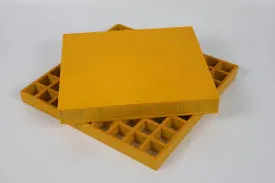
-
 Afrikaans
Afrikaans -
 Albanian
Albanian -
 Amharic
Amharic -
 Arabic
Arabic -
 Armenian
Armenian -
 Azerbaijani
Azerbaijani -
 Basque
Basque -
 Belarusian
Belarusian -
 Bengali
Bengali -
 Bosnian
Bosnian -
 Bulgarian
Bulgarian -
 Catalan
Catalan -
 Cebuano
Cebuano -
 China
China -
 China (Taiwan)
China (Taiwan) -
 Corsican
Corsican -
 Croatian
Croatian -
 Czech
Czech -
 Danish
Danish -
 Dutch
Dutch -
 English
English -
 Esperanto
Esperanto -
 Estonian
Estonian -
 Finnish
Finnish -
 French
French -
 Frisian
Frisian -
 Galician
Galician -
 Georgian
Georgian -
 German
German -
 Greek
Greek -
 Gujarati
Gujarati -
 Haitian Creole
Haitian Creole -
 hausa
hausa -
 hawaiian
hawaiian -
 Hebrew
Hebrew -
 Hindi
Hindi -
 Miao
Miao -
 Hungarian
Hungarian -
 Icelandic
Icelandic -
 igbo
igbo -
 Indonesian
Indonesian -
 irish
irish -
 Italian
Italian -
 Japanese
Japanese -
 Javanese
Javanese -
 Kannada
Kannada -
 kazakh
kazakh -
 Khmer
Khmer -
 Rwandese
Rwandese -
 Korean
Korean -
 Kurdish
Kurdish -
 Kyrgyz
Kyrgyz -
 Lao
Lao -
 Latin
Latin -
 Latvian
Latvian -
 Lithuanian
Lithuanian -
 Luxembourgish
Luxembourgish -
 Macedonian
Macedonian -
 Malgashi
Malgashi -
 Malay
Malay -
 Malayalam
Malayalam -
 Maltese
Maltese -
 Maori
Maori -
 Marathi
Marathi -
 Mongolian
Mongolian -
 Myanmar
Myanmar -
 Nepali
Nepali -
 Norwegian
Norwegian -
 Norwegian
Norwegian -
 Occitan
Occitan -
 Pashto
Pashto -
 Persian
Persian -
 Polish
Polish -
 Portuguese
Portuguese -
 Punjabi
Punjabi -
 Romanian
Romanian -
 Russian
Russian -
 Samoan
Samoan -
 Scottish Gaelic
Scottish Gaelic -
 Serbian
Serbian -
 Sesotho
Sesotho -
 Shona
Shona -
 Sindhi
Sindhi -
 Sinhala
Sinhala -
 Slovak
Slovak -
 Slovenian
Slovenian -
 Somali
Somali -
 Spanish
Spanish -
 Sundanese
Sundanese -
 Swahili
Swahili -
 Swedish
Swedish -
 Tagalog
Tagalog -
 Tajik
Tajik -
 Tamil
Tamil -
 Tatar
Tatar -
 Telugu
Telugu -
 Thai
Thai -
 Turkish
Turkish -
 Turkmen
Turkmen -
 Ukrainian
Ukrainian -
 Urdu
Urdu -
 Uighur
Uighur -
 Uzbek
Uzbek -
 Vietnamese
Vietnamese -
 Welsh
Welsh -
 Bantu
Bantu -
 Yiddish
Yiddish -
 Yoruba
Yoruba -
 Zulu
Zulu
Chemical Solutions for FRP Applications A Complete Guide to Products and Techniques
Chemical Products for FRP Applications A Comprehensive Guide
Fiber Reinforced Plastics (FRP) are materials composed of a polymer matrix reinforced with fibers, providing a unique combination of strength, lightweight properties, and corrosion resistance. These characteristics make FRP an ideal choice for a wide range of applications across various industries, including construction, automotive, aerospace, and marine. This article aims to provide a comprehensive guide to the chemical products used in FRP applications, focusing on resin systems, additives, and curing agents that enhance performance and tailor the material to specific requirements.
1. Resin Systems
The core of any FRP composite is the resin system, which binds the reinforcing fibers together. There are several types of resins commonly used in FRP applications
- Polyester Resins Unsaturated polyester resins are among the most commonly used materials in FRP composites. They offer a good balance of strength, flexibility, and chemical resistance. Polyester resins are cost-effective and can be easily molded into complex shapes, making them popular in industries such as marine, automotive, and construction.
- Vinyl Ester Resins Vinyl ester resins provide improved chemical resistance compared to standard polyester resins. They are ideal for applications requiring exposure to aggressive environments, such as chemical storage tanks and industrial structures. Their superior performance makes them slightly more expensive, yet they are highly valued for their durability.
- Epoxy Resins Epoxy resins are renowned for their exceptional mechanical properties and adhesion characteristics. They exhibit low shrinkage during curing and have excellent resistance to water, heat, and chemicals. Epoxy is particularly useful in demanding applications, including aerospace components and high-performance sporting goods.
2. Additives
To enhance the performance of FRP systems, various additives can be incorporated into the resin formulations. These include
- Fillers Fillers such as calcium carbonate, talc, and glass beads are added to resins to improve certain properties, like viscosity, thermal stability, and overall cost-effectiveness. Fillers can also help reduce the density of the final composite while maintaining its mechanical strength.
chemical products for frp applications a comprehensive guide ...

- Colorants Colorants and pigments can be added to resins to provide aesthetic appeal or to meet specific regulatory requirements. The choice of colorant can affect the curing process, so it’s essential to use compatible products.
- Fire Retardants In applications where fire resistance is critical, fire retardants can be incorporated into the resin formulation. These additives help to slow down combustion and can significantly increase the safety of the final product.
- Surface Modifiers Surface modifiers are used to improve the interaction between the resin and the reinforcing fibers, enhancing wet-out and adhesion. This results in improved mechanical properties and durability of the composite.
3. Curing Agents
Curing agents, or hardeners, play a vital role in the polymerization of resin systems. They initiate the chemical reaction that transforms liquid resins into solid composites. Common types of curing agents include
- Methyl Ethyl Ketone Peroxide (MEKP) MEKP is a widely used catalyst for polyester and vinyl ester resins. It promotes the curing process at room temperature but is sensitive to moisture and temperature variations.
- Amines Amine-based curing agents are used primarily with epoxy resins. They offer various curing times and flexibility, allowing manufacturers to customize the curing process according to their requirements.
- Anhydrides Anhydrides provide excellent adhesion and mechanical properties in curing epoxy resins. They offer extended working times, making them suitable for large-scale applications.
Conclusion
The versatile properties of Fiber Reinforced Plastics can be significantly enhanced through carefully selected chemical products. Understanding the different resin systems, additives, and curing agents available enables manufacturers to optimize their FRP composites for specific applications, ensuring superior performance and longevity. As technology advances and new formulations are developed, the potential of FRP materials continues to expand, promising exciting possibilities across various industries. By leveraging the right chemical products, businesses can meet the evolving demands of the market while achieving sustainability and efficiency.









